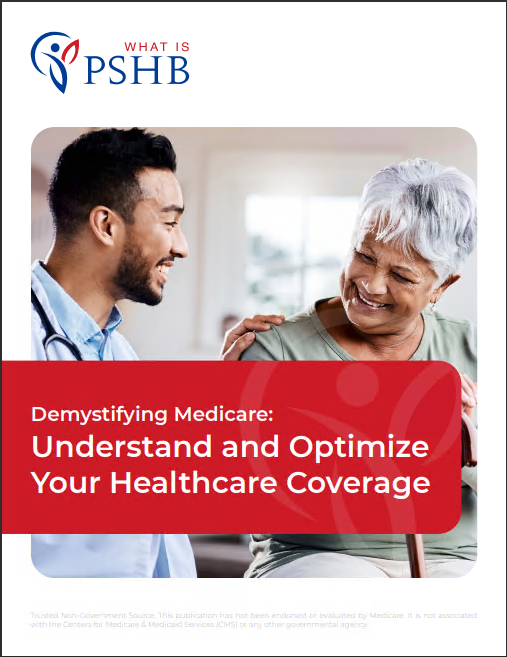Key Takeaways
-
Understanding PSHB eligibility rules helps you avoid surprises in retirement, especially regarding Medicare integration.
-
Reviewing these eligibility requirements early allows you to plan effectively and avoid unintended disruptions to your healthcare coverage.
1. Mandatory Enrollment for Medicare-Eligible Annuitants
If you’re approaching retirement or already retired from the USPS and become eligible for Medicare, there’s an important rule you should understand clearly: you must enroll in Medicare Part B to maintain your Postal Service Health Benefits (PSHB) coverage. This rule is specifically designed for Postal Service annuitants and their eligible family members who become Medicare-eligible after January 1, 2025.
Here’s what this means for you practically:
-
You must enroll in Medicare Part B during your Initial Enrollment Period, which starts three months before you turn 65 and extends three months after your 65th birthday.
-
Failing to enroll in Medicare Part B on time might lead to a disruption in your PSHB coverage.
-
Medicare Part B covers outpatient services, preventive care, doctor visits, and lab tests, supplementing your PSHB and offering a more comprehensive coverage package.
Missing this important window could have lasting impacts, so staying on top of enrollment dates is critical to securing your retirement healthcare.
2. Family Coverage Eligibility is More Flexible
PSHB offers flexible family coverage options, but eligibility rules differ slightly from those you might be used to under previous plans. To qualify your spouse and dependents for PSHB coverage, you need to know the following criteria clearly:
-
Your spouse and dependents are eligible if you, the employee or retiree, remain enrolled in a PSHB plan.
-
Children up to age 26 are eligible regardless of marital status or student status, providing a more extended coverage period than many private insurance options.
-
Family members who become Medicare-eligible after 2025 must also follow the same rules regarding mandatory Medicare Part B enrollment to maintain their PSHB eligibility.
This flexibility is designed to make your retirement planning easier, but always verify your family’s eligibility periodically, especially when life changes like marriages, divorces, or dependent aging occur.
3. Specific Medicare Exceptions for Some Retirees
While PSHB mandates Medicare Part B enrollment for most annuitants, there are notable exceptions you need to understand clearly to avoid unnecessary worries or penalties:
-
Postal Service employees and retirees who were at least 64 years old by January 1, 2025, are exempt from mandatory Medicare Part B enrollment.
-
Employees and retirees who had already retired by or on January 1, 2025, are not required to enroll in Medicare Part B, provided they have maintained continuous health coverage.
Knowing whether you qualify for these exceptions is critical as you approach retirement or continue your journey through retirement. Misunderstanding your eligibility might lead to enrolling unnecessarily or, worse, missing your crucial enrollment window.
4. PSHB and Medicare Part D Coordination
Prescription drug coverage under the PSHB is closely integrated with Medicare Part D Employer Group Waiver Plans (EGWP). Here’s what this coordination entails for retirees:
-
Medicare-eligible retirees and family members automatically receive prescription drug benefits through a PSHB-sponsored Medicare Part D plan.
-
Unlike standard Part D plans, the PSHB Medicare Part D arrangement often provides more favorable terms, such as reduced copayments and coinsurance.
-
A critical change beginning in 2025 is the introduction of a $2,000 cap on annual out-of-pocket prescription drug costs for Medicare Part D under PSHB. This can significantly help retirees with chronic medical conditions who regularly need prescription medications.
Understanding the specifics of this arrangement allows you to plan ahead financially and anticipate healthcare expenses accurately during retirement.
Why Staying Updated on PSHB Rules Matters
Staying updated on eligibility rules isn’t just about compliance; it’s about financial security and peace of mind in retirement. Here are reasons why it’s crucial:
-
Avoid Costly Penalties: Missing enrollment windows for Medicare Part B can lead to permanent late-enrollment penalties, significantly raising your healthcare costs.
-
Ensure Continuous Coverage: Knowing the exact dates and rules ensures you maintain uninterrupted healthcare, vital during retirement.
-
Optimize Your Benefits: Properly navigating PSHB and Medicare rules helps you maximize available benefits, ensuring you’re not missing out on valuable healthcare services.
Being proactive about understanding these rules positions you advantageously, providing security and predictability in your healthcare expenses as you age.
Timing is Everything: Key PSHB Timelines
Clear timelines can greatly simplify your retirement planning. Here are crucial periods you must keep track of:
-
Initial Medicare Enrollment Period: This crucial seven-month window spans from three months before your 65th birthday to three months after your birthday month.
-
Annual Open Season: Generally running from November to December each year, this period allows you to evaluate, select, or switch your PSHB coverage.
-
Qualifying Life Events (QLEs): Outside the Open Season, significant life events—like marriage, divorce, loss of other health insurance coverage, or moving—provide special enrollment opportunities typically lasting 60 days.
Tracking these timelines closely ensures smooth transitions without stressful last-minute decisions.
Preparing Financially for PSHB and Medicare Costs
Retirement planning isn’t complete without addressing healthcare expenses. Here’s how PSHB impacts your financial strategy:
-
Monthly Premiums: Annuitants typically pay around $111.26 biweekly for self-only plans, with costs rising for family plans. Being aware of these costs helps budget your retirement effectively.
-
Deductibles and Copayments: Expect deductibles ranging from $350 to $2,000 annually based on your chosen PSHB plan. Planning for these expenses reduces unexpected financial stress.
-
Prescription Drug Costs: Remember the significant $2,000 annual cap for prescription drugs under the integrated Medicare Part D plan.
Clear financial planning around these numbers helps ensure you’re not caught off guard by healthcare expenses as you transition into retirement.
Seek Expert Advice to Stay Ahead
Rules governing PSHB and Medicare are complex and evolving. Seeking professional advice is strongly recommended to navigate these intricacies efficiently. Professional guidance can provide:
-
Personalized advice tailored specifically to your retirement timeline and healthcare needs.
-
Updates on changes or adjustments in PSHB or Medicare regulations.
-
Strategic recommendations on which PSHB plan options best align with your healthcare and financial situations.
Secure Your PSHB Benefits with Confidence
Understanding these four eligibility rules clearly and proactively can significantly enhance your retirement experience. Don’t leave your health coverage and financial security to chance—take active steps now to review your PSHB status, ensure compliance, and make informed decisions.
Ready to clarify your PSHB eligibility further? Get in touch with a licensed agent listed on this website today for personalized, professional advice on navigating your Postal Service Health Benefits.






